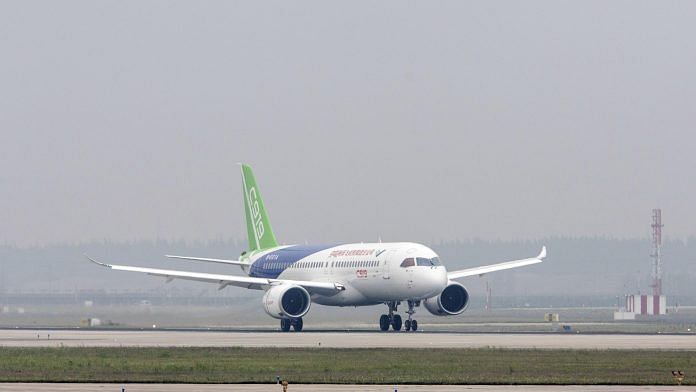China is finally reaching the finish line in its long-delayed attempt to build a jet capable of competing with narrowbody planes from Airbus SE and Boeing Co., according to the state-owned company in charge of the program.
Commercial Aircraft Corp. of China, or Comac, will deliver its first C919 single-aisle jet by the end of the year, Communist Party-backed newspaper Global Times reported Sunday, citing Comac general engineer Yang Zhigang.
The C919, comparable to the Airbus A320 and Boeing 737, had its first flight in 2017 but has yet to carry any commercial passengers. Representatives from Comac weren’t immediately available to comment.
Even if the first C919 is delivered as promised, it will take many years before Comac becomes a serious threat to the Western aerospace duopoly, according to Peter Harbison, chairman emeritus of Sydney-based CAPA – Centre for Aviation. The company won’t have the sales volumes necessary to convince mainstream non-Chinese customers they should take a chance on a new aircraft, he said.
“Airlines don’t want expensive orphans and the alternative is to buy an economically large number in order to get scale, still with uncertain spares and engineering support,” Harbison said in an email.
Still, with President Xi Jinping’s government eager to reduce China’s reliance on Airbus and Boeing, Comac can afford to plan for the long term. That’s why it’s moving ahead on an even more ambitious project this year, with Yang saying it would begin manufacturing of the CR929, a twin-aisle jet it’s developing with a Russian partner.
Although Comac will make the C919 in China, the plane is hardly an exclusively Chinese product as it depends on foreign companies like General Electric Co. for many critical parts. Comac landed on a blacklist of Chinese companies in the final days of the Trump administration.
That move, which prohibits U.S. investors from buying securities of companies on the list, was largely symbolic as Comac isn’t publicly traded. But other companies put on such lists — including Comac shareholder Aviation Industry Corp. of China — later became targets for more severe sanctions, including curbs on access to American technology.- Bloomberg
Also read: Airlines try ultra-cheap fares to get the world flying again







When India will produce such a planes..
So, while we are trying to be Atmanirbhar in mobile games and renaming fruits, here is China – through ingenuity and reverse engineering has made their aircraft industry come of age. Whereas NAL has been toiling with SARAS since the mid 2000s and it is yet to undergo its formal introduction.